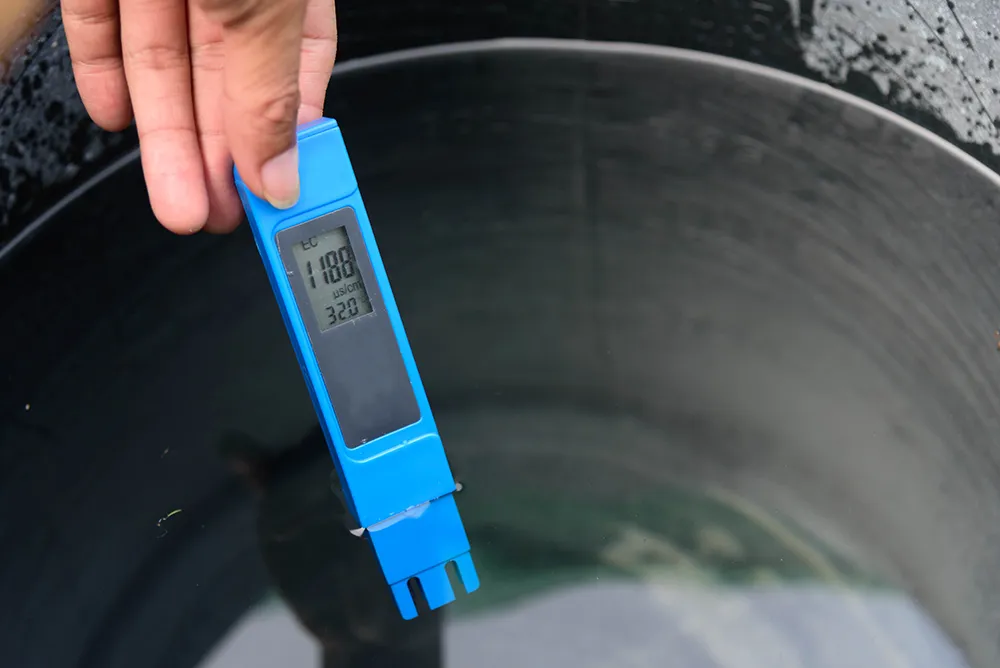What is the electrical conductivity of water?
Pure water, without any dissolved substances, cannot conduct electricity. It is only when there are dissolved substances present that water becomes conductive. The level of conductivity is measured in microsiemens (µS). From these measurements, we can determine the amount of dissolved particles in the water. This is why electrical conductivity is considered a general indicator parameter according to the Drinking Water Ordinance.
Rainwater typically has an average conductance of 30 µS. However, when minerals or salts are added, the conductivity increases while resistance decreases. Mineral-rich spring water, for example, has a conductance of 80 to 130 microsiemens and a resistance ranging from 7,700 to 12,500 ohms. The current Drinking Water Ordinance sets a limit value of 2500 µS/cm for water temperature at 20°C. The WHO recommends a maximum of 400 µS, while for crisis areas, the recommended limit is 2790 µS.
What does increased electrical conductivity in drinking water mean?
If measurements indicate an increase in conductivity, it implies the presence of dissolved substances in the water. However, this doesn’t necessarily mean the quality of drinking water. As the conductivity increases, the amount of chemical compounds that may pollute the water also increases.
How does the electrical conductivity of water affect the human body?
The increase in conductivity indicates possible impurities. Various substances have a negative or health-threatening effect on the human organism above a specific concentration.
The degree of saturation of the water with foreign substances directly influences the osmosis of the body cells. The absorption and removal of essential substances are derived from this. A conductance of 120 microsiemens or a resistance of at least 8,300 ohms is favourable. At more than 300 microsiemens, the water can no longer maintain its function in the cell.
According to scientific studies by Professor Louis-Claude Vincent, drinking water should have a conductance of no more than 160 microsiemens or a resistance of at least 6,000 ohms. If the conductance is above 160 microsiemens, the health risk increases.
Drinking water polluted by too high electrical conductivity? What to do?
The reference to contamination in drinking water due to increased conductivity must be followed up by subsequent water tests and laboratory analyses. This is because undetected pollutant contamination can affect consumers’ health. With the reverse osmosis process and the use of activated carbon block filters, the conductive minerals, salts, heavy metals, pesticides, pharmaceutical residues and organic substances are reliably reduced. Afterwards, the conductivity drops significantly. As a rule, however, the consumer can hardly expect any damage to health from increased conductivity values.
How do I test my tap water if the electrical conductivity is too high?
Contamination of drinking water with certain substances can have unpleasant consequences for health. To ensure the safety of drinking water, the Drinking Water Ordinance has set limits for numerous parameters. While the waterworks guarantee clean tap water up to the house connection, the drinking water pipes and fittings within the house may become contaminated by biofilms, lead, mercury or copper. A laboratory analysis can clearly detect any undesirable substances or elevated values that might be present in tap water. If you have a well, monitoring nitrate and phosphate values is essential. Regular water analyses can provide crucial information and ensure the safety of our most important foodstuff – water.


